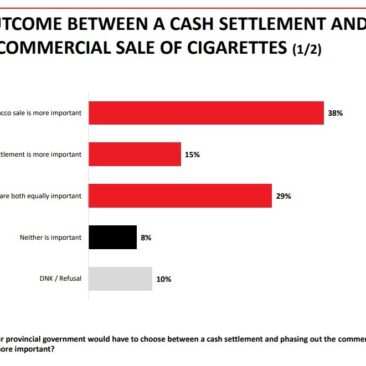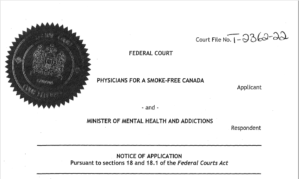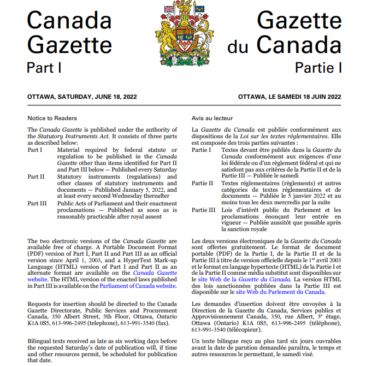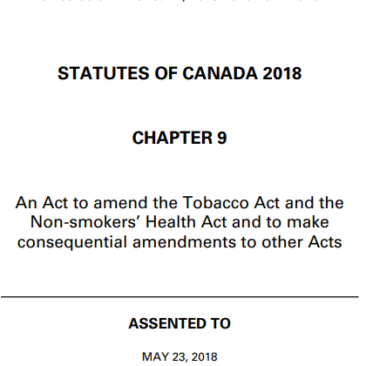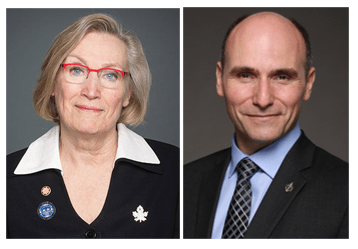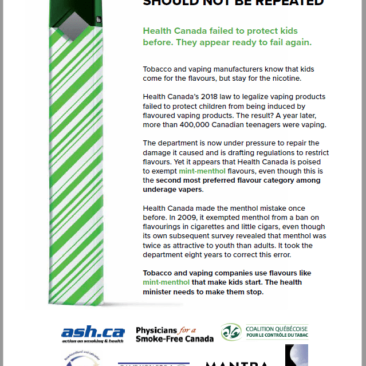The federal government has set the goal of reducing smoking rates in Canada to less than 5% by 2035. But are we on track to getting there? And are there economic benefits to governments and citizens if we do?
This summer, the Quebec Coalition for Tobacco Control and Physicians for a Smoke-Free Canada commissioned Dr. Hans Krueger to answer these questions. Dr. Krueger is a Canadian health economist who specializes in measuring the economic impact of health behaviours.
Dr. Krueger focused his efforts on Canada’s two largest provinces, Ontario and Quebec. He found that if current trends continue, neither province would reduce smoking to 5% by 2035. As things are going, smoking rates are set to be more than double the goal — 12.9% in Quebec and 11.5% in Ontario in 2035.
If, however, these provinces achieved a 5% prevalence rate in 2035 by accelerating the current rate of decline, there would be significant economic benefits to their communties. Dr. Krueger estimates that achieving this goal would save Quebecers $22.2 billion and would save Ontarians $26.1 billion.
Current trends in smoking predict high future health care costs
Dr. Krueger used the Canadian Community Health Survey to analyze trends in smoking rates and intensity of smoking between 2000 and 2018. From these, he projected what smoking rates will likely be in 2035. As an alternative scenario, he estimated how many smokers there would be if these provinces were on track to reduce smoking to 5% by 2035. He calculated that reaching this national target would result in 990,000 fewer smokers in Ontario and 641,000 in Quebec.
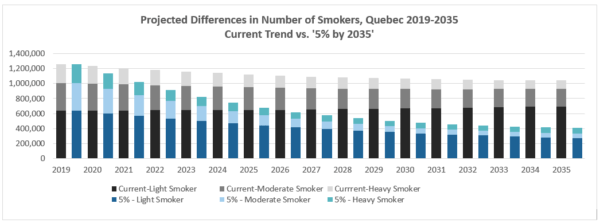
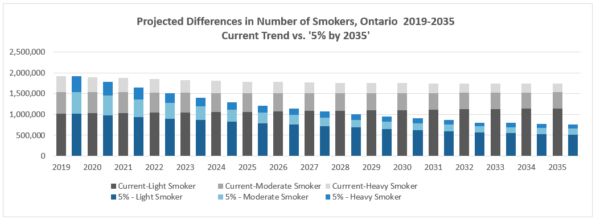
Fewer smokers would reduce both the direct costs of treating smoking-caused disease and the indirect costs that result from earlier deaths and disability. Dr. Krueger calculated how much lower these costs would be each year if the ‘5% Trend’ were in place, and how much the savings would add up to by 2035, factoring in inflation. The combined benefit was close to $50 billion, of which one-third would be in the health care costs mostly covered by provincial healthcare programs.

By providing a forecast of future costs, Dr. Krueger’s study complements recent reports on the economic burden of smoking, such as that released this year by the Canadian Centre on Substance Use and Addiction and the University of Victoria.
This analysis suggests that our current public health interventions are not strong enough to reach the national goal. This is a conclusion also reached by other Canadian researchers, using different analytic methods.
While highlighting the need to develop further interventions to reduce smoking, this report provides the economic rationale for doing so.
Dr. Krueger’s report “The Economic Benefits of Reducing the Prevalence of Tobacco Smoking in Quebec and Ontario” is available here.


